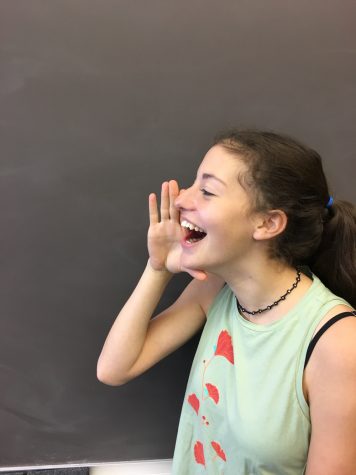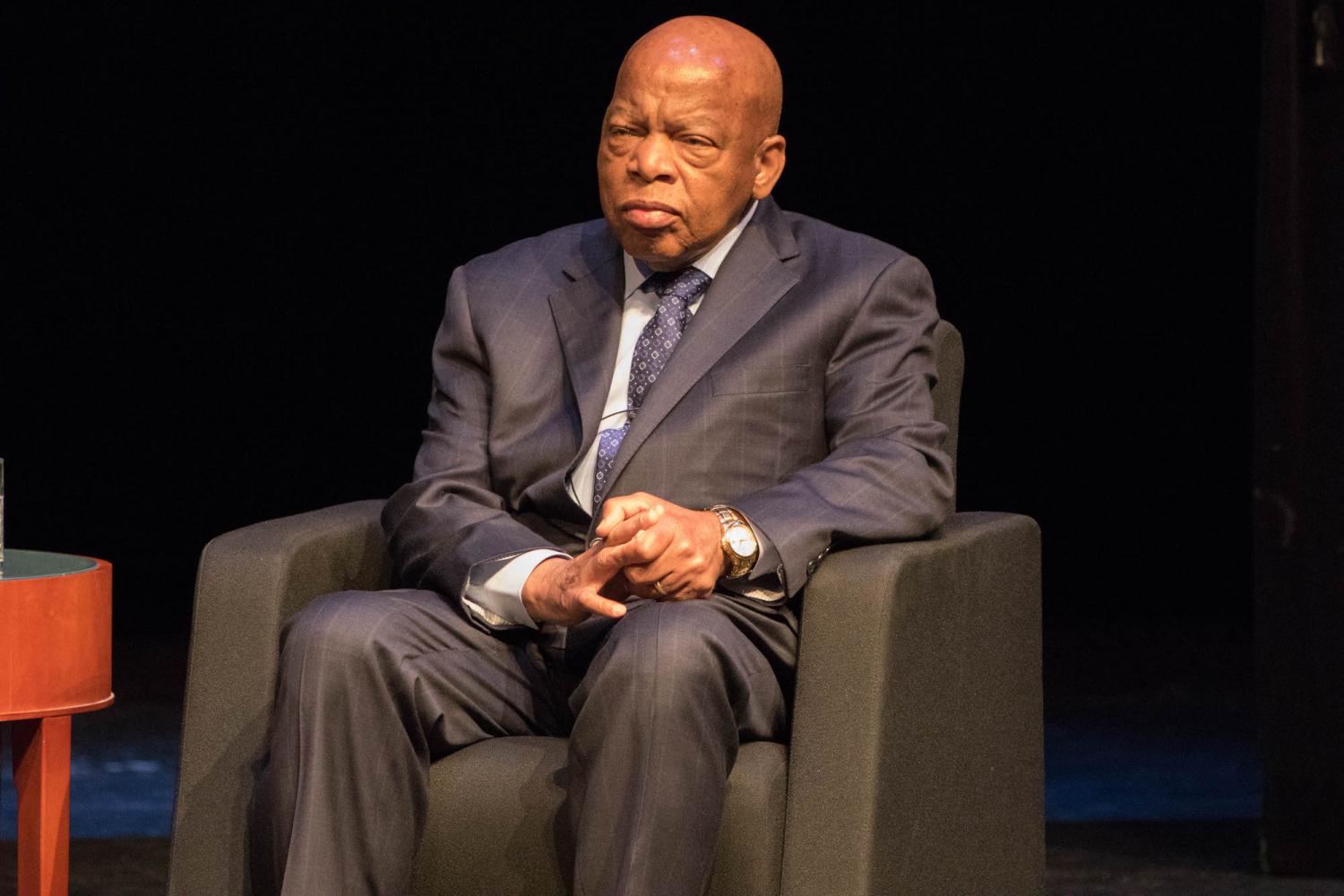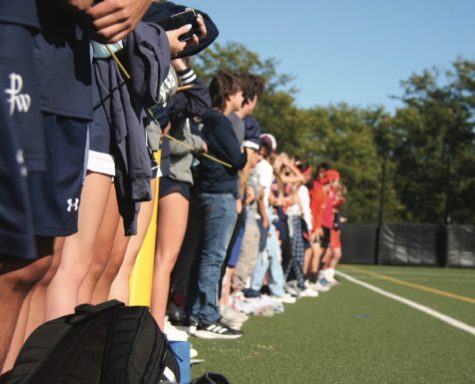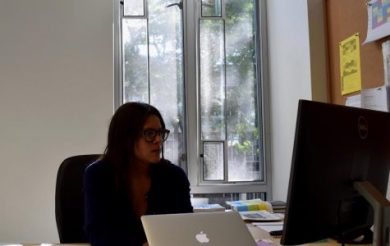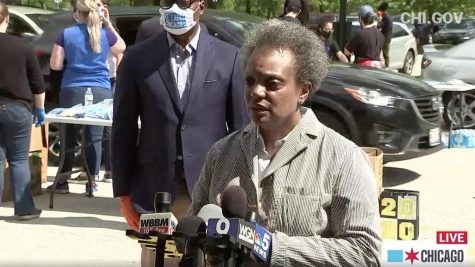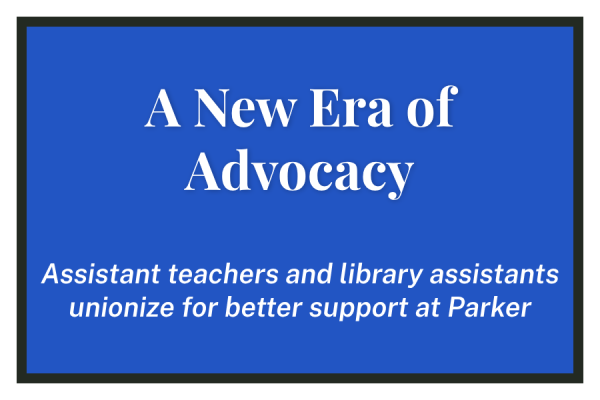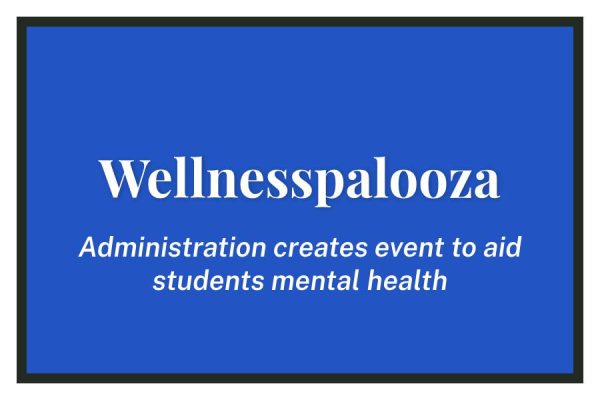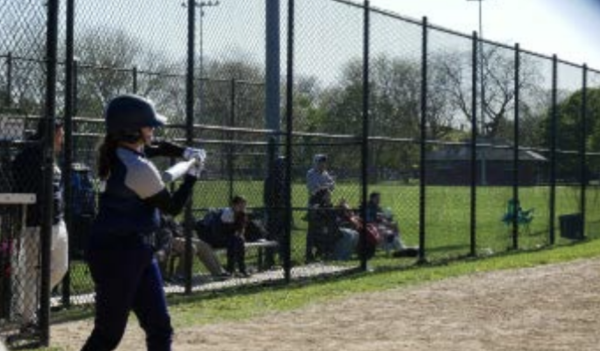Congressman John Lewis Visits Parker
“March” Book Tour Calls Younger Generation to Action
A call to action, “to never give up or lose hope, and resist again,” rang out in the classrooms and auditorium of Parker.
On Tuesday, Parker had the unique opportunity to interact with civil rights legend John Lewis, U.S. Representative for Georgia’s 5th Congressional District. Lewis and his co-author Andrew Aydin came to Chicago as part of a book tour for their trilogy about the Civil Rights Movement, “March.”
Over the course of the day, Lewis and Aydin visited the Upper School Civil Rights class, met with the eighth grade, and received three standing ovations during their full-house Morning-Ex presentation delivered to third through twelfth graders. Later that evening, Lewis held a private book signing in the courtyard with around 60 people, followed by a packed public presentation in the auditorium.
Like novelist Colson Whitehead in February, Lewis came to Parker by way of a nonprofit organization called the Family Action Network (FAN), which according to its webpage “curates a free, high-quality human development speaker series each academic year.” According to Parker parent Shawnelle Richie, she and Parker mothers Terry Abruzzo and Trish Rooney were “commiserating over what happened last year at that Morning Ex, and we were looking for ways to create dialogue around diversity, equity, and inclusion.”
Rooney’s sister in-law is a founding member of FAN, and for a school that is supposed to be “a model home, a complete community, an embryonic democracy,” Richie said, “trying to reinforce the language of inclusion and purpose” felt natural.
At 77 years, his shiny head bearing the scars of beatings from marches, sit-ins, and freedom rides, Lewis stared intently during the MX at students in the front rows, gesturing dramatically with his hands, modulating his tone of voice with the intensity of his story.
“As a young child, I tasted the bitter fruits of discrimination and I didn’t like it,” Lewis said. “I asked my mother and I asked my father, ‘Why segregation? Why racial discrimination?’ I saw the signs that said ‘white boys,’ ‘colored boys,’ ‘white girls,’ ‘colored girls’…”
Lewis’s simplicity and humility are what sixth grade history teacher Keedra Gibba found most teachable, “to think about just the ordinary, every-day person doing something to fight against racism,” she said. “I want to get away from that kind of ‘hero’ in history because that makes them think that only certain kinds of people can participate and make change.”
As Lewis made clear in his remarks, before he became the chairman of the Student Nonviolent Coordinating Committee (SNCC), before he was the youngest speaker at the 1963 March on Washington, before he was arrested over 40 times and beaten for standing up for civil rights, he was a boy from rural Troy, Alabama, willing-to question the circumstances of the life he lived.
The first time Lewis met Martin Luther King, Jr. was in March of 1958, when Lewis was 18 years old. “I didn’t know what to say or what to do,” Lewis said. “And Dr. King said, ‘Are you the boy from Troy?’ And I said, ‘Dr. King, I am John Robert Lewis.’ I gave my whole name, and he called me the ‘Boy from Troy.’”
Aydin, a staff member in the Congressman’s office, encouraged Lewis to tell his story through a graphic novel series to appeal to a generation where “it cannot just be a few of you who choose to be an activist. We need an entire generation like we had in the 1960s.”
After Lewis’s evening presentation, in an audience split between adults and students, FAN’s Executive Director Lonnie Stonitsch requested that only students be given the time to ask their questions. “I was reminded that young people have something to say,” Richie said. “They have questions to ask, and we, the elders, need to allow them to do that.”
Aydin, sporting a beard grown during the election in solidarity of his late Muslim father when anti-Muslim sentiments were high, said there is a fault in our generation’s knowledge of civil rights. “There is something in this country called the Nine Word Problem,” Aydin said. “Most students who graduate from high school in the United States only know nine words about the Civil Rights movement: ‘Rosa Parks, Martin Luther King, I have a dream.’ That’s it. Part of our mission with ‘March’ is to change that.”
“March” was required reading for the third, sixth, and eighth grades, and for the upper school Civil Rights elective. “To see the emotions coming off of the pages of the books,” senior Julia Smith, who is taking the Civil Rights class, said. “And putting it together with what I experienced on [the civil right’s Cookies] trip, and what I had read, I have come to be inspired by John Lewis and Andrew Aydin.”
Aydin shared the moment he realized the impact this book could have on young people. A Wall Street Journal reporter called Aydin to congratulate him on its publication, and to tell him that he’d given a copy to his nine year-old son, who had since put on his Sunday suit and paraded around the living room “demanding equality for everyone.”
“Can you imagine if every young person in America had a social conscience?” Aydin said. “If they understood what it took to make an equal and fair society? The sacrifices that were made during the civil rights movement? This country would be a different place in a generation.”
Lewis tends to believe in the possibility of young Americans “waking up again.” He paid tribute to the “hundreds and thousands and millions of women that got involved in the women’s march,” noting he led the march of more than 60,000 women in Atlanta, Georgia. And he reminded his audiences of the opportunity they have to contribute to conversations about equality, climate, and healthcare through voting–“the most powerful nonviolent tool that we have in a democratic society.”
“If our children will emerge and lead us, maybe just maybe we can emerge as a model for the rest of the world,” Lewis said. “So stand up, speak up, speak out, get in the way, get in trouble… good trouble… necessary trouble.”
